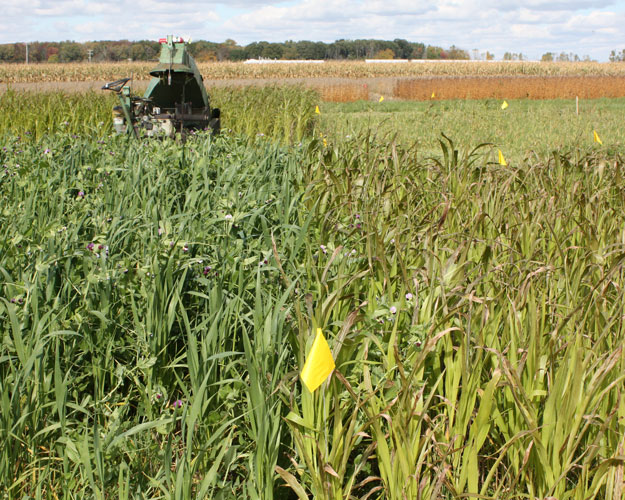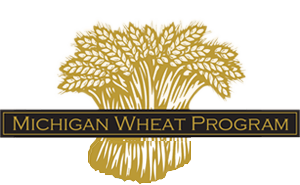Forages as Cover Crops in the Wheat-Corn Rotation Sequence
The window of time after wheat harvest offers a perfect opportunity to gain extra value from the typical Michigan rotation of wheat-corn-soybean. In most years, July wheat harvest leaves 60 to 90 days where a fast-growing cover crop could potentially be harvested for a extra forage crop while also providing cover crop benefits like building soil organic matter, scavenging nutrients, fixing nitrogen, and controlling erosion.
In 2013, we began a three-year study to evaluate the potential of harvesting a short-rotation silage crop from cover crops planted after wheat harvest. Half of each cover crop treatment will be harvested for silage about 60 days after planting and the other half of the plot will be left as an undisturbed cover crop. The experiment includes frost-seeded red clover as a positive control treatment and a fallow plot with no cover as a negative control. Corn will be planted in 2015 so that we can evaluate the effect of the cover crop management choices on corn grain productivity. Cover crops include: oat/pea mixture, cowpea, sunn hemp, non-dormant alfalfa, sudangrass, sorghum-sudangrass, teff, and oilseed radish, all of which are designed to winterkill to reduce the need for cover crop termination in the spring.
This project is funded by Project GREEEN and the Michigan Wheat Checkoff program.




